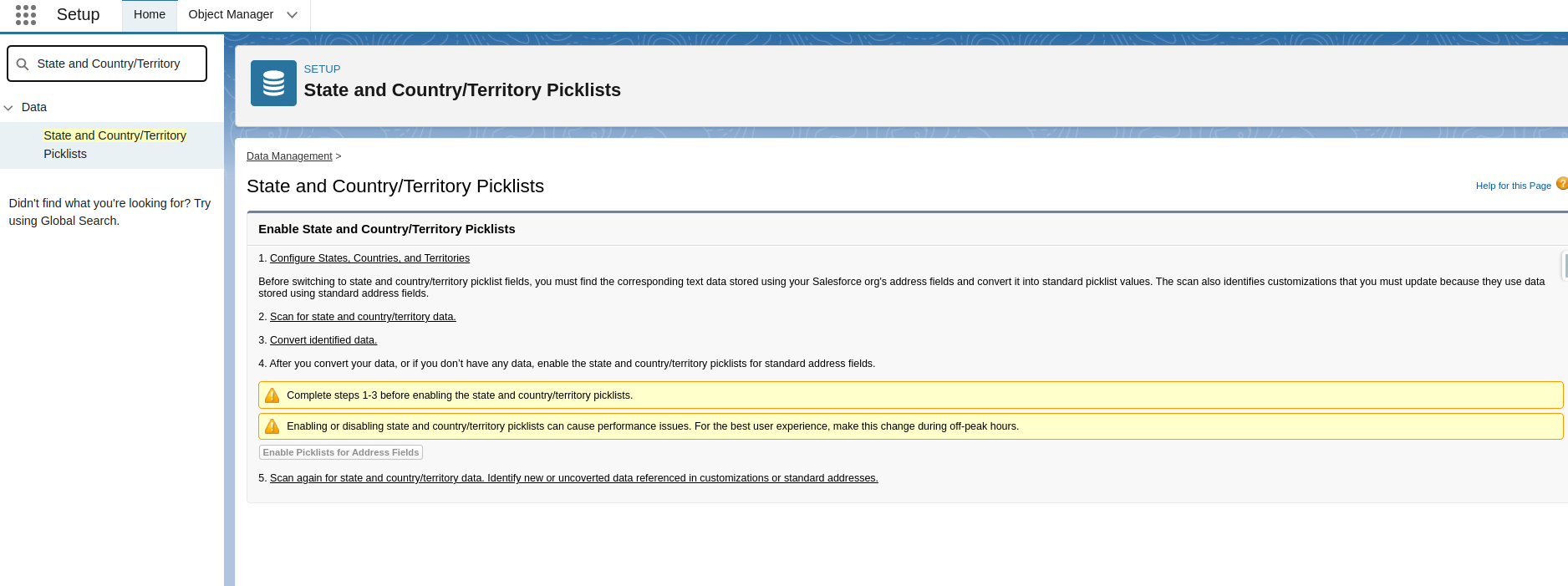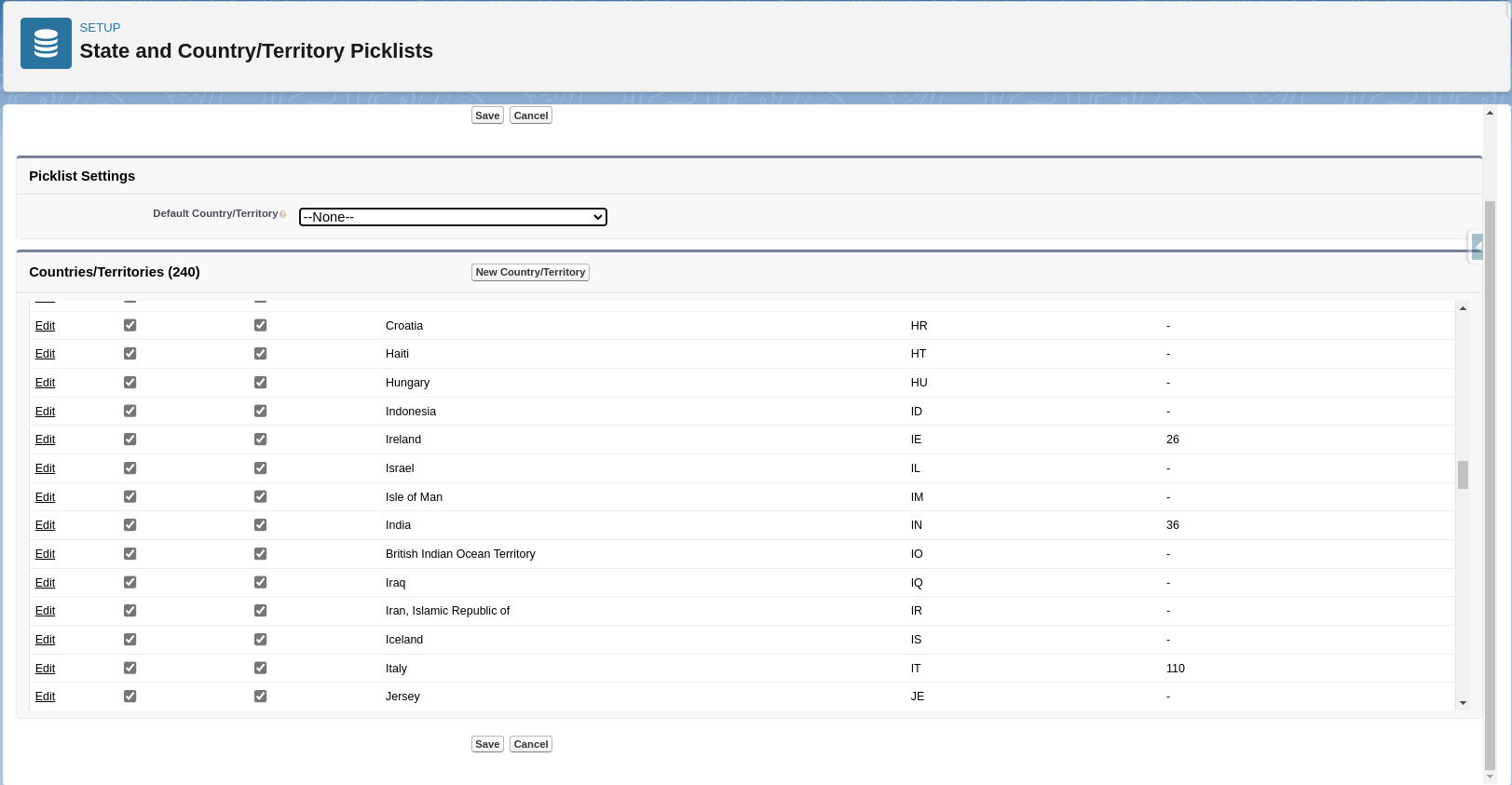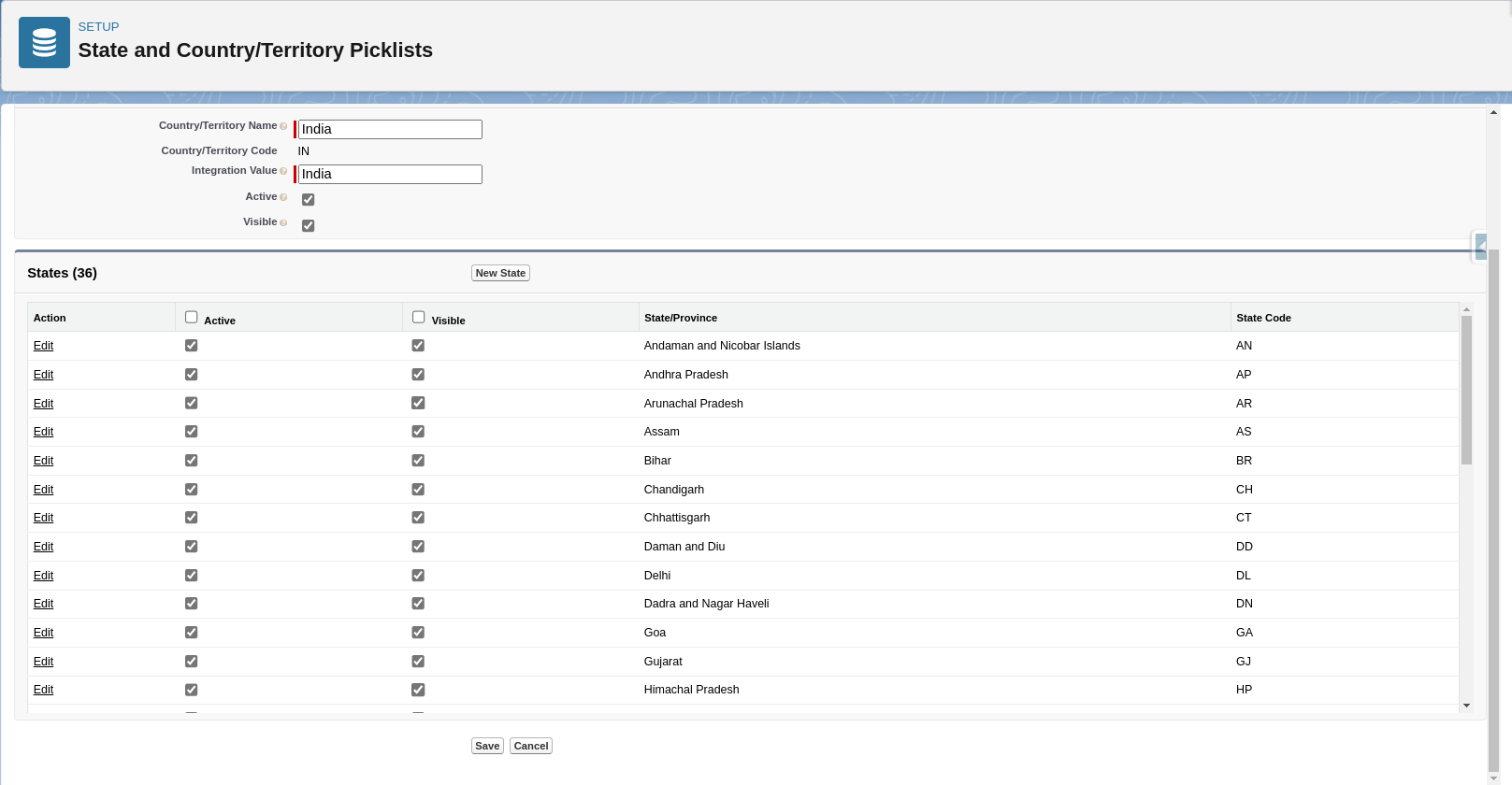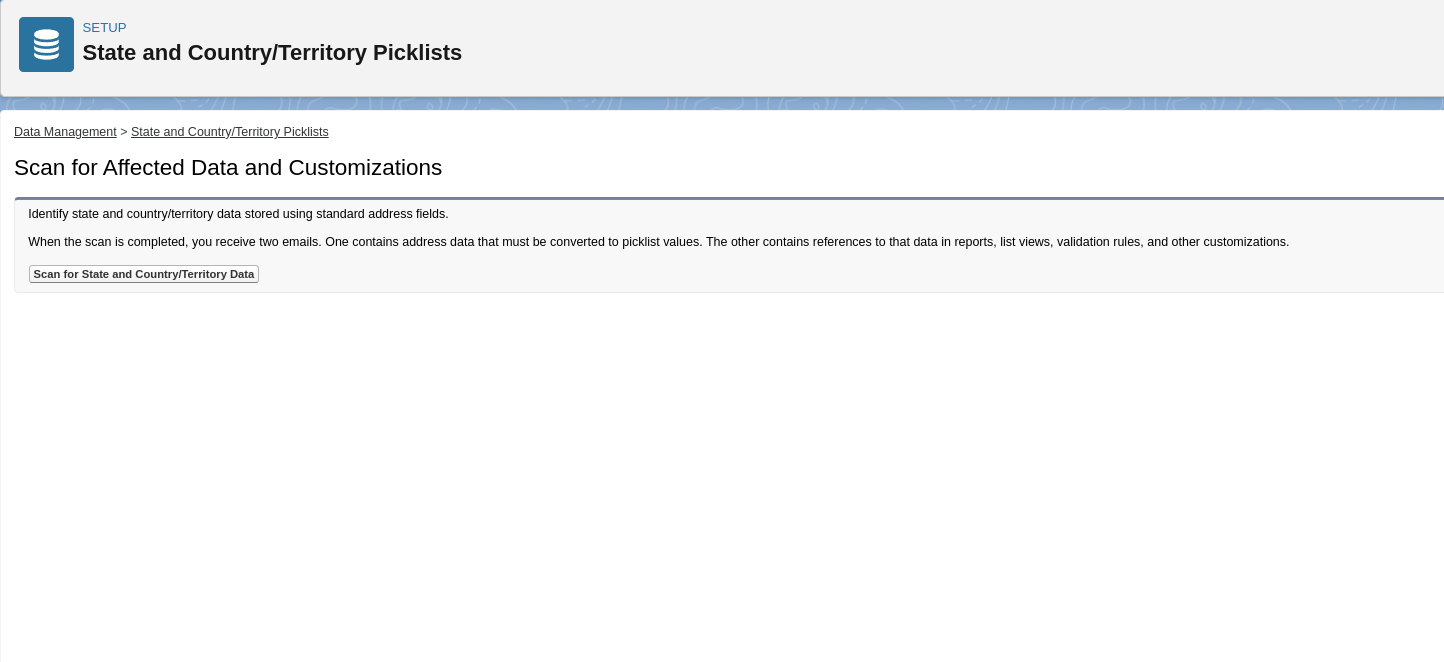
Looking for a Salesforce expert? Look no further!

In Salesforce, the standard address field is a compound field that allows you to store and manage address information for records. It is called the "Address" field type and is commonly used in various standard and custom objects.
The Address field in Salesforce is a combination of multiple sub-fields that together represent a complete address. The sub-fields included in the standard Address field are:
When you use the Address field in Salesforce, you can enter or retrieve data for each of these sub-fields individually, or you can work with the complete address as a single unit.
Address field is a standard field type in Salesforce, and it is available by default in many standard objects. Additionally, you can also create custom address fields in your custom objects if needed, using the same structure and sub-fields as the standard Address field.
In this tutorial, we will illustrate the step-by-step process of configuring standard Address Fields in Salesforce.

Go to the setup gear icon, then click on setup

Search State and Country/Territory on the QuickFind box
You must complete steps 1-3 before enabling the state and country/territory picklists.
Select 1st step as Configure State, Country and Territory from Enable State and Country/Territory Picklists.

You can add new countries/territories or configure existing ones.
You can choose a default (if you like) and tick the relevant Countries/Territories to make them Active and Visible.
To add new, click on New countries/territories and click on Edit to configure existing countries/territories.
Here, we are clicking Edit to configure countries/territories.

You can add new States or configure existing ones similar to countries/territories.
After configure, Click on save

Select 2nd step as Scan for State and Countries/Territories Data from Enable State and Country/Territory Picklists.
Start process by click on Scan for State and Countries/Territories Data.
When the scan is completed, you receive two emails. One contains address data that must be converted to picklist values. The other contains references to that data in reports, list views, validation rules, and other customizations.

Select 3rd step as Convert Identified Data from Enable State and Country/Territory Picklists.
Map existing state and country/territory data in your records' address fields to standardized picklist values.
Map country/territory values first, and then map state values.
After map country & states fields, Click on Finish and Enable Picklists.

After completing steps, State and country/territory picklists are enabled for your organization.

Let's create a new lead to test the address fields. Upon doing so, we can observe that the country fields are displayed as a Picklist, providing a pre-defined list of options to choose from.

States/Province fields are displayed as a Picklist.
It's all about setting things up right, keeping data clean, and making sure users know the drill. We've covered how to do this from start to finish, focusing on making everything work well together.
Looking for specialized Salesforce administrators and developers?
YES